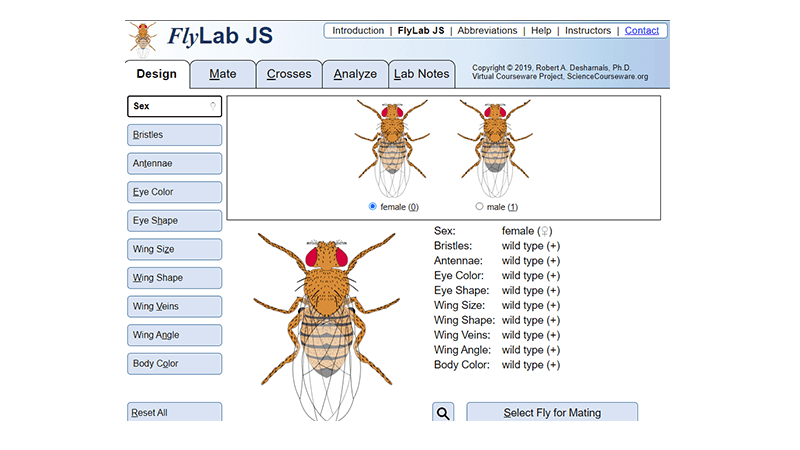
This new version of FlyLab does not use Flash and has all the features of the old Drosophilab. Students can explore phenotypes and genotypes of flies, design experiments, and perform chi square analysis. This lab can replace a traditional lab where students grow and cross living fruit flies, fly cultures can be ordered from Amazon or from bio supply companies. Though I no longer do the live lab due to time constraints, sometimes I order the flies to show as an example and give students some experience with growing, sedating and sorting flies. Instead of flies, my classes use Wisconsin Fast Plants for real genetic experiments, but there are some limitations with plant traits you can study.
This worksheet was designed for remote learning because most of my students are at home during the pandemic. Students start by examining the genotypes and phenotypes of the flies in the simulation. Phenotypes include wing shape, eye colors and shapes, body colors and many other variations.

Next students perform a basic monohybrid cross showing the inheritance pattern of vestigial wings (VG). Students are already familiar with this type of cross, so here they are learning to use the simulator and the built-in chi square analyzer. Next they design an experiment to determine which allele is dominant regarding wing shape. Depending on which was chosen, they may not get the predicted outcomes. Curly wings (CY), for example, are lethal, but students wouldn’t necessarily know that, or yet understand why they may not get the expected results.
Students also practice with sex linked traits and do a specific cross that includes a lethal allele. The final problem set involves linkage groups. Depending on the level of your student, you may want to eliminate this part, as it can be difficult for beginning biology students.
I usually go over linkage groups before they do this activity but some might prefer to creatively use this as an anchoring phenomenon to explore. For example, you could have students cross a VG BL with a heterozygous wild-type fly and have them brainstorm reasons why the results do not follow the expected (Mendelian) ratio.


